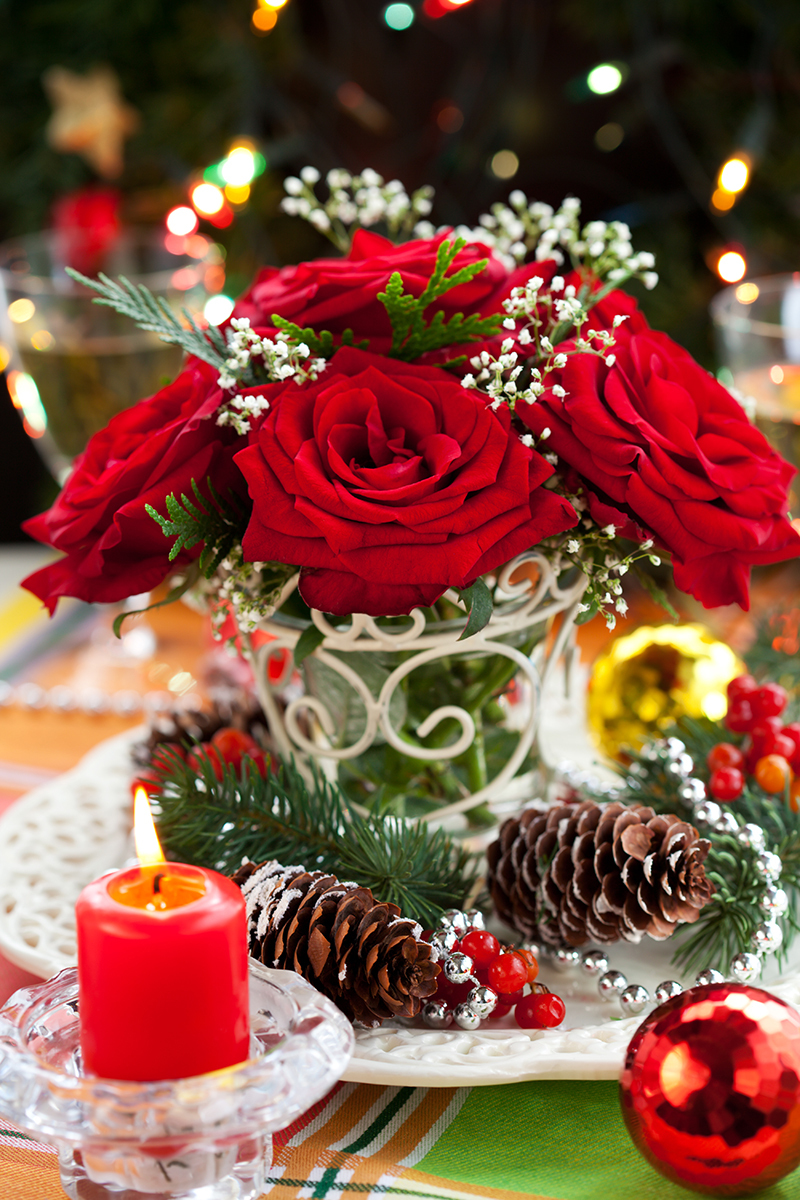Secrets to Extending the Life of Your Poinsettias
Posted on 25/08/2025
Secrets to Extending the Life of Your Poinsettias
Poinsettias (Euphorbia pulcherrima) have become synonymous with the festive season, lighting up homes and public spaces with their vibrant red, pink, or white bracts. But if you're like most plant lovers, you may have wondered: How do you extend the life of your poinsettias and keep them thriving long after the holidays? If you're ready to unlock the secrets to keeping your poinsettia beautiful and healthy for months--or even years--this comprehensive guide will show you how.
Why Do Poinsettias Seem So Short-Lived?
Many people assume that poinsettias are simply disposable holiday plants, meant to be thrown away as soon as the New Year arrives. However, this belief stems from improper care rather than any innate short lifespan of the plant. With a bit of know-how and some dedicated care, you can enjoy your festive poinsettias well beyond the holiday season.

Best Practices for Poinsettia Longevity
1. Select a Healthy Poinsettia Plant
The journey to a long-lasting poinsettia starts at purchase. Choosing a healthy plant is the first secret to extending the life of your poinsettias.
- Look for vibrant bracts (colored leaves) that aren't wilting or curling.
- Check the true flowers (the small yellow buds in the center); they should be tightly clustered and not shedding pollen.
- Inspect leaves and stems for pest damage or signs of disease.
- Choose poinsettias with dark green, abundant foliage down to the soil line.
2. Provide Ideal Light Conditions
Poinsettias thrive in bright, indirect light. Avoid direct sunlight, which may scorch the bracts, and keep your plant away from drafty windows or heating vents.
- Place your poinsettia near a sunny east-, west-, or south-facing window.
- If natural light is insufficient, use a grow light to supplement.
- Rotate the plant every few days to ensure even growth and bract coloration.
3. Watering Secrets for a Healthy Poinsettia
Overwatering is the number one killer of poinsettias. With the right watering regimen, you'll significantly prolong the life of your plant.
- Always check soil moisture before watering; stick your finger about an inch deep into the soil.
- Water only when the soil feels dry to the touch, but don't allow it to dry out completely.
- Let excess water drain away--never let the pot sit in standing water as this can cause root rot.
- Remove decorative foil covers or poke holes in them to facilitate proper drainage.
4. Maintain the Perfect Temperature
Temperature fluctuations can stress your poinsettias.
- Ideal temperatures: 60-70?F (15-21?C) during the day, no lower than 55?F (13?C) at night.
- Avoid cold drafts, sudden temperature changes, or being too close to radiators or fireplaces.
5. Humidity: A Sacrosanct Secret
Poinsettias hail from subtropical Mexico and appreciate moderate humidity.
- Mist the leaves lightly every couple of days to increase humidity, especially in dry winter environments.
- Position your poinsettia near a tray of water and pebbles or use a room humidifier.
6. Fertilization: Feeding for Ongoing Health
When it comes to feeding poinsettias for longevity, timing and moderation are vital.
- Do NOT fertilize when the plant is in bloom (during or directly after the holiday season).
- Once new growth starts (typically late winter to spring), fertilize monthly with a balanced, water-soluble household fertilizer (20-20-20).
Advanced Strategies for Extending the Life of Your Holiday Poinsettia
Repotting Your Poinsettia after the Holidays
To truly extend poinsettia longevity, you may want to repot your plant into fresh soil once it starts looking tired--usually in late winter or early spring.
- Choose a slightly larger pot with proper drainage holes.
- Use a high-quality, well-draining potting mix.
- Carefully loosen the root ball and remove any visibly dead or mushy roots before repotting.
Pruning for Regrowth and Bushiness
Pruning is essential for maintaining a compact and attractive poinsettia.
- In late March or early April, prune your poinsettia back to about 4-6 inches above the soil, leaving a few leaves on each stem.
- This encourages new, bushier growth as the weather warms.
- Pinch back new shoots periodically in summer to promote fuller, more robust plants.
Reblooming Secrets: How to Get Poinsettias to Flower Again
Getting your poinsettia to rebloom for the next holiday season is the ultimate challenge--and the greatest reward for dedicated planters.
- In late September or early October, provide 14-16 hours of uninterrupted darkness each night for 8-10 weeks. Cover the plant with a thick box or keep it in a closet from evening until morning (no peeking, as even brief exposures to light can interrupt flowering).
- During the day, return your poinsettia to bright, indirect sunlight for at least 6 hours.
- Continue normal watering and fertilization during this time.
- After 8-10 weeks, buds will form in the center of the colored bracts, signaling the return of festive blooms.
Solving Common Poinsettia Problems
Leaf Drop and Wilting: Causes and Cures
Leaf drop is one of the most common issues with poinsettias and may be due to:
- Sudden changes in temperature
- Under or overwatering
- Exposure to cold drafts
To fix and extend the lifespan of your poinsettia, move your plant to a stable, draft-free environment, adjust watering to keep soil slightly moist, and ensure it's not in direct contact with hot or cold air.
Poinsettia Pests and Diseases
Watch out for:
- Whiteflies, aphids, or spider mites: Treat with insecticidal soap or neem oil.
- Root rot: Usually a result of overwatering--let the soil dry and remove any rotten roots before repotting if needed.
- Powdery mildew or fungal leaf spots: Improve air circulation, avoid overhead watering, and remove affected leaves.
FAQs About Caring for Poinsettias Year-Round
Can I plant my poinsettia outdoors?
If you live in USDA zones 9-11 (like southern Florida or southern California), you can move your poinsettia outside after the threat of frost passes. Select a semi-shady spot, acclimate it gradually, and protect it from harsh afternoon sun. In colder climates, keep it indoors or treat it as a houseplant.
Why are my poinsettia's leaves turning yellow?
Yellowing leaves can be a sign of:
- Overwatering or poor drainage
- Insufficient light
- Nutrient deficiencies
Fix these issues promptly to keep your poinsettia vibrant and healthy.
Are poinsettias toxic to pets?
Contrary to popular belief, poinsettias are only mildly toxic to cats and dogs. Ingestion may cause mild stomach upset, but generally isn't life-threatening. Still, it's best to keep them out of reach of curious pets and children.
Expert Tips: Going Above and Beyond with Poinsettia Care
- Use a decorative pot cover with built-in drainage to enjoy both beauty and practicality.
- Dust the leaves gently with a damp cloth to keep them looking their best and to prevent pests.
- Group several poinsettias together for a more humid microclimate.
- Keep poinsettia away from fruits; ripening fruit emits ethylene gas that can shorten bract life.
- Consider trying unique varieties, like those with marbled, speckled, or pink bracts, for an eye-catching display.

Myth Busting: Poinsettia Facts vs. Fiction
- Poinsettias are not true annuals! With care, they can live--and rebloom--for years.
- The colored "flowers" are actually bracts; the true flowers are the tiny yellow centers.
- They are only mildly toxic, not deadly.
- Poinsettias do NOT have to be discarded after Christmas--think of them as a year-round houseplant.
Conclusion: Enjoy Your Poinsettia All Year Long
By understanding and applying the secrets to extending the life of your poinsettias, you can transform a holiday gift or home decoration into a lasting, lush houseplant. With careful selection, proper watering, the right light and temperature, and a little post-holiday attention, your poinsettias can brighten your home well beyond the winter months.
Whether it's keeping your poinsettia vibrant after Christmas, encouraging it to rebloom, or simply enjoying its greenery year-round, a little knowledge and care go a long way. Share these poinsettia care tips with friends and family so everyone can enjoy their beautiful plants throughout the seasons!
Ready to transform your holiday poinsettia into a long-lasting botanical companion? Try these techniques today and discover the rewards of healthy, thriving poinsettias in your home all year round!
Latest Posts
Discover 7 Astonishing Facts About Tulips You Probably Didn't Know
Top Picks for Low Maintenance Office Plants
Secrets to Extending the Life of Your Poinsettias





